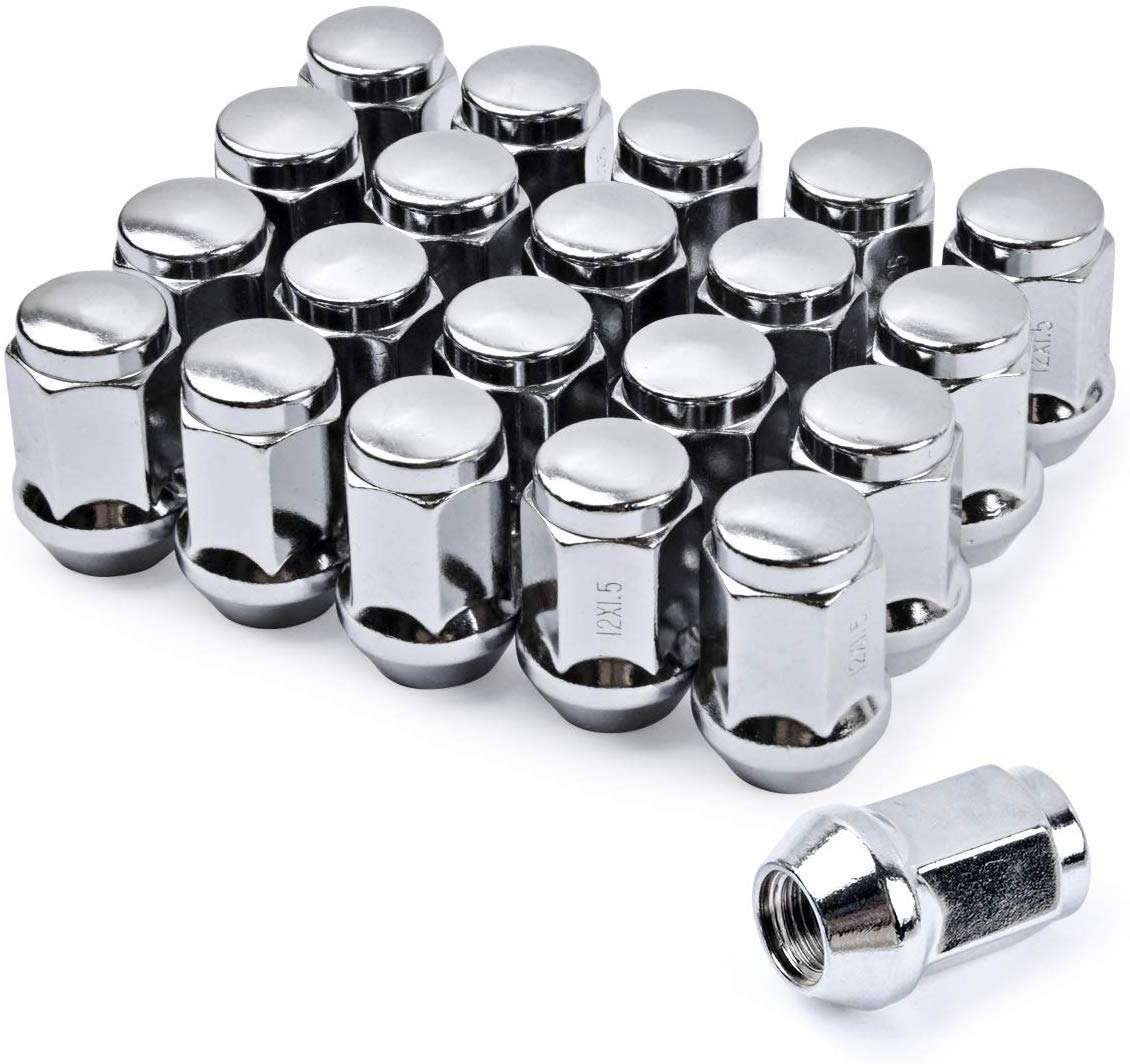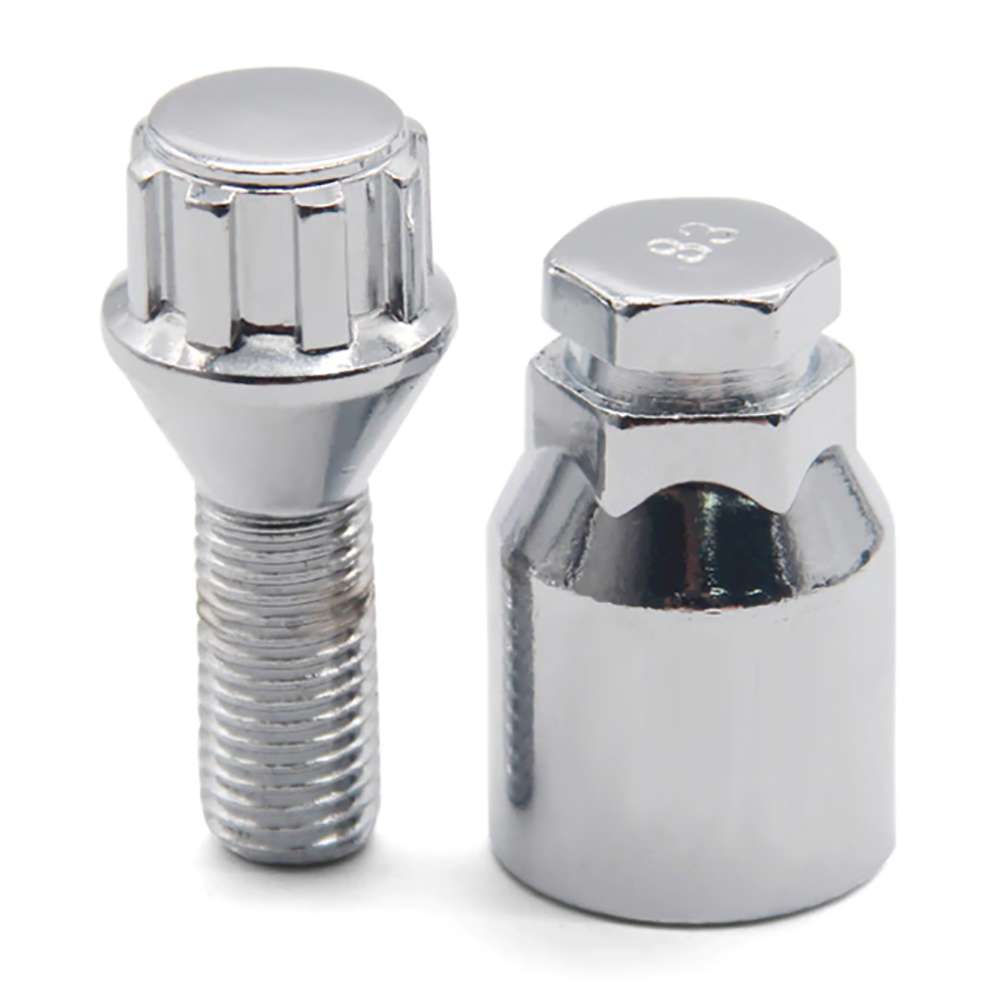LUG NUTS
Hex nut: This type of lug nut features a six-sided head. This head is threaded onto the wheel stud to keep the wheel locked in place. Hex nuts are usually made of chrome-plated steel, but you can find versions that are constructed with lighter materials, such as titanium and aluminum.
Conical seat: This lug nut features a cone-shaped lug seat, where the nut meets the wheel. Each seat has a 60- or 45-degree taper that helps to center the wheel in place on the stud as it’s tightened. Conical seat lug nuts are also known as tapered or acorn lug nuts, and they’re frequently used in NASCAR and other motorsports.
Open-ended: Open-ended lug nuts aren’t closed on either end, and they’re threaded through the length of the nut. This design allows the nut to be run on longer wheel studs. Open-ended lug nuts are commonly used on race cars.
Tuner nut: A tuner nut is similar to a conical seat in that both have a taper. However, they differ in that a tuner nut requires the use of a special tool during installation and removal. Since a key or tool is needed to remove this nut, a wheel with a tuner nut may be harder for thieves to steal.
LUG BOLTS
With a lug bolt, a threaded stem is affixed to a tapered head. Think of it as a lug nut permanently attached to a wheel stud that screws directly into the hub.
While a lug nut screws onto a threaded wheel stud that is attached to the hub, a lug bolt eliminates the need for a wheel stud. Its design allows the wheel and the brake rotor to be directly attached to the hub. Lug bolts are more often seen on European cars, appearing on brands such as Audi, BMW and Volkswagen.




